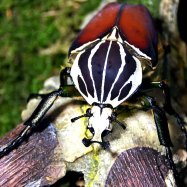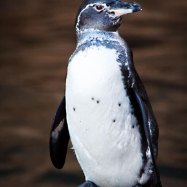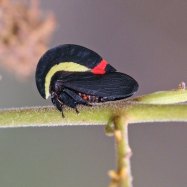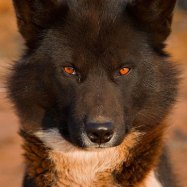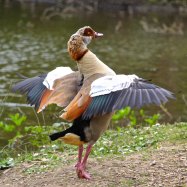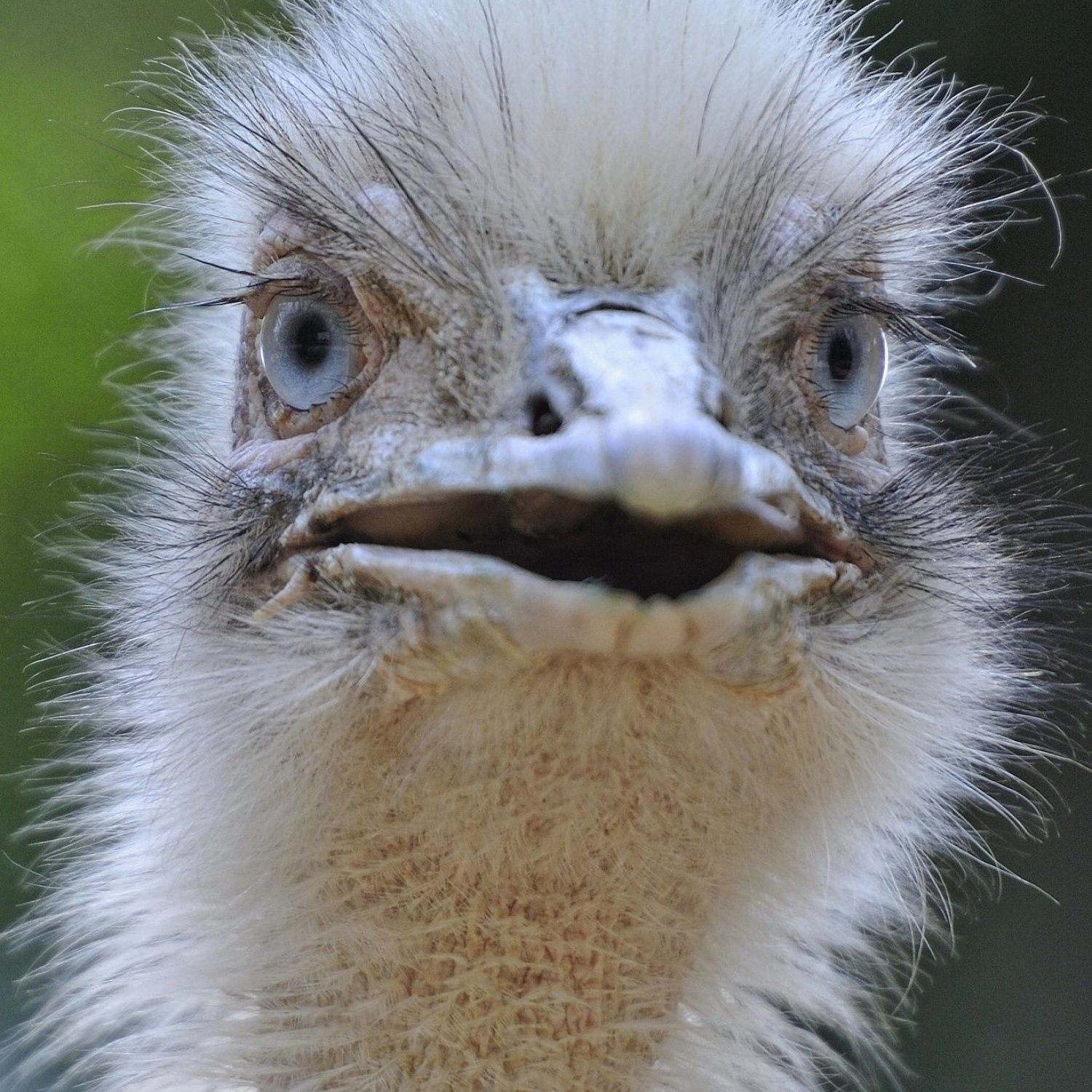
Rhea
120-150 cm (47-59 inches)
. Rheas are large, flightless birds found in open areas with low vegetation. They can grow up to 120-150 cm (47-59 inches) in length, making them one of the world's largest birds. With their long necks and powerful legs, they are perfectly adapted to run and thrive in their natural habitat. Belonging to the family Rheidae, these majestic creatures are a must-see for any wildlife enthusiast. Keep an eye out for these beautiful animals on your next outdoor adventure!
Animal Details Summary:
Common Name: Greater Rhea
Kingdom: Animalia
Habitat: Grasslands, savannas, and wetlands
The Magnificent Greater Rhea: South America's Majestic Flightless Bird
South America is known for its diverse flora and fauna, and among the many unique animals that can be found here, the Greater Rhea stands out as a fascinating and admirable species. With its regal appearance, distinctive features, and interesting behavior, the Greater Rhea is a bird that can captivate anyone who encounters it.The Greater Rhea, scientifically known as Rhea americana, is the largest bird in South America and belongs to the family of Rheidae. With its impressive size and majestic looks, it's no wonder it's also commonly referred to as the American Rhea or simply, the Rhea Rhea. In this article, we will explore the remarkable characteristics and abilities of this magnificent bird.
A Taxonomic Breakdown
Before we delve deeper into the world of the Greater Rhea, let's have a brief overview of its taxonomic classification. It is a part of the Animalia kingdom, Chordata phylum, Aves class, and Rheiformes order. Within its family, Rheidae, it shares the spotlight with only two other species, the Lesser Rhea and Darwin's Rhea.A Natural Habitat Fit for Royalty
The Greater Rhea can be found in the grasslands, savannas, and wetlands of South America, making it widespread across the continent. Its geographical distribution includes countries such as Argentina, Bolivia, Brazil, Paraguay, and Uruguay. However, its habitat also expands to other South American countries, such as Chile, Ecuador, and Peru.When it comes to its specific habitat, the Greater Rhea prefers open areas with low vegetation, as it makes it easier for them to move around. These birds can cover a vast distance while foraging, and their habitat must allow them to do so efficiently Red Racer Snake.
An Omnivorous Diet
The Greater Rhea is an omnivore, which means it feeds on both plants and animals. In the wild, its diet primarily consists of grasses, fruits, seeds, and small invertebrates. Interestingly, they have a unique way of foraging, known as "start feeding." This behavior involves them catching and tossing up food with their beak and then quickly snapping it up in mid-air.While they are capable of flying, they rarely do and instead rely on their powerful legs for running. This is especially useful during hunting, where they can reach impressive speeds of up to 60km/h (37mph).
A Beauty in its Variation
The Greater Rhea may not be a brightly colored bird, but it is certainly not dull. Its coloration varies from grey-brown to bright brown, depending on the individual bird and its environment. This variation is vital in blending in with their surroundings, providing them with excellent camouflage.Apart from their color, their body shape is also quite striking. They have a large, round body, a long neck, and strong legs. These features not only contribute to their regal appearance but also serve specific purposes. For instance, their long neck allows them to reach vegetation that other birds may not be able to access, and their powerful legs help them in running from predators.
A Giant in Size
As mentioned before, the Greater Rhea is the largest bird in South America. This massive bird can grow to an impressive size of 120-150 cm (47-59 inches) in length, with males typically being larger than females. They can also weigh up to 20-25kg (44-55lbs), making them one of the heaviest birds in the world.Their large size is one of their most significant advantages, making them less vulnerable to predators. However, some of their natural predators include the puma, fox, and humans.
Behavioral Traits and Mating Habits
The Greater Rhea is a social bird and can form flocks of up to 30 individuals, comprising both males and females. These birds have a hierarchical social structure, with dominant males leading the group. They generally live in monogamous pairs, where the male takes on the responsibility of incubating and raising the young.During the mating season, the males perform an elaborate courtship dance, which involves puffing up their feathers, spreading their wings, and making guttural sounds. This dance is not only a form of courtship but also a way for the male to show off his dominance and attract females.
Once the mating is complete, the female will lay a clutch of up to 20 eggs, which the male will then incubate for approximately 36 days. After hatching, both parents take on the role of caring for the chicks until they are independent.
Conservation Status and Threats
Despite their vast distribution across South America, the Greater Rhea's population is currently declining, and they are listed as a Near Threatened species by the International Union for Conservation of Nature (IUCN). Not only are these birds hunted for their meat and feathers, but they are also facing habitat loss due to human activities such as agriculture and urbanization.Fortunately, conservation efforts are in place to protect and preserve these magnificent birds. In countries like Brazil, hunting of Rheas is illegal, and efforts to educate and raise awareness among locals are ongoing. Additionally, measures to protect their grassland habitats are also being implemented.
Conclusion
In conclusion, the Greater Rhea is a remarkable bird that deserves our admiration and protection. Its size, color variation, and interesting behavior make it a captivating species to observe. As we continue to learn more about the Rhea and its role in its ecosystem, it is crucial to also recognize and address the threats it faces and work towards their conservation. The Greater Rhea is a true symbol of South America's rich and diverse wildlife, and it is up to us to ensure its survival for generations to come.

Rhea
Animal Details Rhea - Scientific Name: Rhea americana
- Category: Animals R
- Scientific Name: Rhea americana
- Common Name: Greater Rhea
- Kingdom: Animalia
- Phylum: Chordata
- Class: Aves
- Order: Rheiformes
- Family: Rheidae
- Habitat: Grasslands, savannas, and wetlands
- Feeding Method: Omnivorous
- Geographical Distribution: South America
- Country of Origin: Argentina, Bolivia, Brazil, Paraguay, and Uruguay
- Location: Open areas with low vegetation
- Animal Coloration: Varies from grey-brown to bright brown
- Body Shape: Large, flightless bird with a long neck and strong legs
- Length: 120-150 cm (47-59 inches)
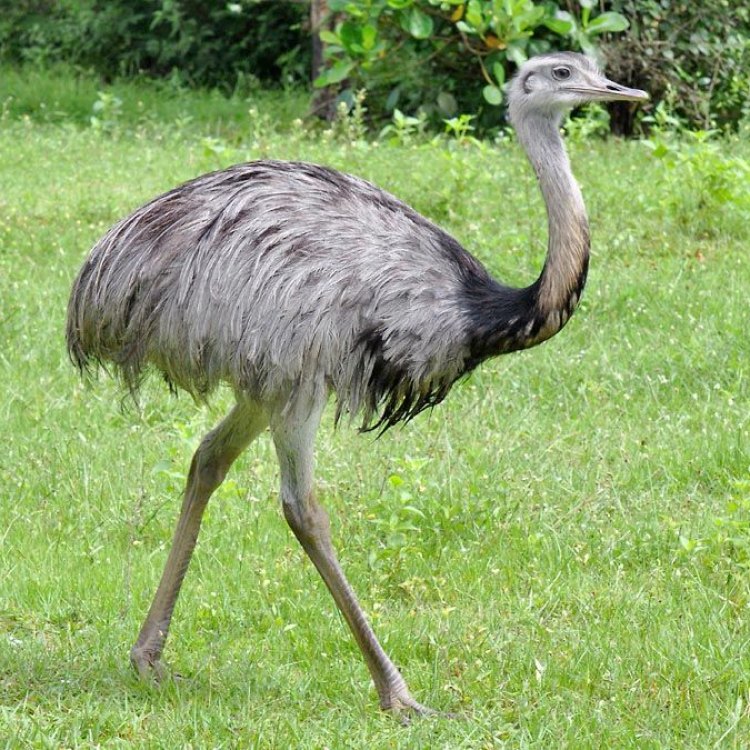
Greater Rhea
- Adult Size: Weighs around 20-30 kg (44-66 lbs)
- Average Lifespan: 15-20 years in the wild
- Reproduction: Oviparous
- Reproductive Behavior: Males form small groups and court females
- Sound or Call: Loud booming calls during courtship
- Migration Pattern: Some populations are partially migratory
- Social Groups: Usually found in small groups or pairs
- Behavior: Diurnal and terrestrial
- Threats: Habitat loss, hunting, and egg collection
- Conservation Status: Near Threatened
- Impact on Ecosystem: Important seed dispersers
- Human Use: Hunted for meat and feathers
- Distinctive Features: Three-toed feet and a crest of long feathers on the neck
- Interesting Facts: Second tallest bird species in the world
- Predator: Predators include jaguars, foxes, and large birds of prey
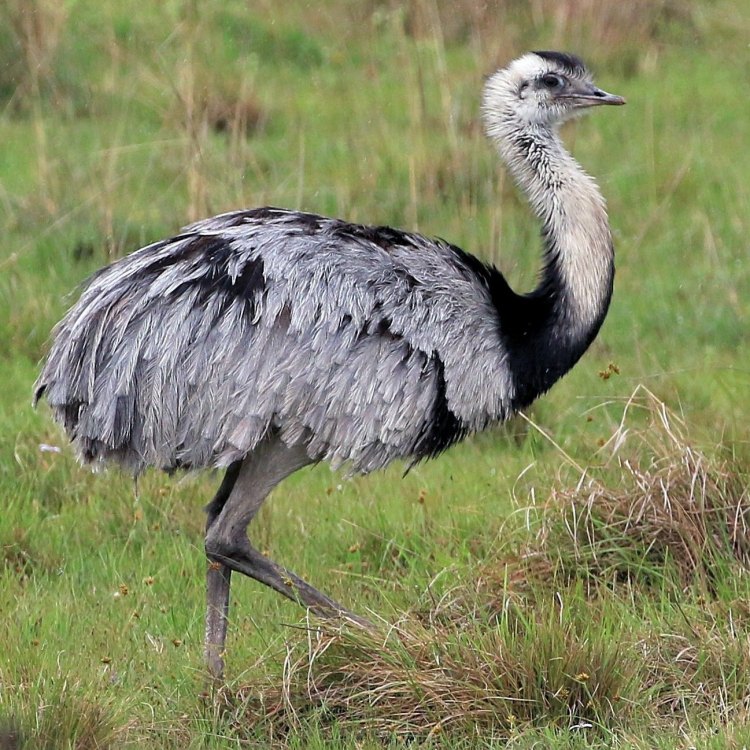
Rhea americana
The Rhea: A Fascinating and Threatened Species
The vast, open plains of South America are home to a variety of unique and fascinating creatures. From colorful macaws to speedy jaguars, these animals have captivated human interest for centuries. But there is one species in particular that stands out, not just for its distinctive features and fascinating behavior, but also for its vulnerable status in the wild – the Rhea.With its three-toed feet, distinctive crest of long feathers, and towering stature, the Rhea is a truly remarkable bird PeaceOfAnimals.Com. It belongs to the family of ratites, which includes other flightless birds like ostriches and emus. However, the Rhea is unique in its own right, with a range of physical and behavioral characteristics that make it stand out in the animal kingdom.
Adult Rheas generally weigh around 20-30 kg (44-66 lbs) – making them the second tallest bird species in the world, after ostriches. They have a long, slender neck and a small, pointed head which is adorned with a pair of curious eyes. Their plumage is mostly gray in color, with hints of brown and white. And of course, their most distinctive features – the three-toed feet and the crest of long feathers on their necks – make them easily recognizable.
But while their physical appearance may be impressive, it is their behavior that truly sets them apart. Aside from their distinctive calls and mating rituals, Rheas have a unique reproductive behavior. They are oviparous, meaning they lay eggs, but it is the males who take on the responsibility of incubating and raising the chicks Red Wolf.
During breeding season, male Rheas will form small groups and court females. This involves loud, booming calls and impressive displays of their feathers and wings. Once a female has chosen a mate, she will lay her eggs in a nest that the male has prepared for her. He will then take on the task of incubating and caring for the eggs until they hatch. This unique approach to parenting is just one of the many interesting facts about the Rhea.
Aside from their breeding and reproductive behavior, Rheas are also known for their loud and distinctive calls. Their calls are used both for communication within their social groups and during courtship rituals. These loud booming calls can be heard from quite a distance, making them a key indicator of a Rhea's presence in the area.
In terms of their daily habits, Rheas are diurnal, meaning they are most active during the day. They are also terrestrial, spending most of their time on the ground rather than in trees or the air. They are omnivorous, feeding on a variety of plants, insects, and small animals. This makes them important contributors to their ecosystem, playing a crucial role in seed dispersal.
But despite their uniqueness and importance to the ecosystem, Rheas face numerous threats in the wild. The most significant threat to their survival is habitat loss, as their grassland and shrubland habitats are continuously being converted for agricultural use. Hunting and egg collection are also contributing factors to their declining numbers in the wild.
Unfortunately, human use of Rhea parts also puts them at risk. These birds are often hunted for their meat and feathers, which are used in traditional medicine and for decorative purposes. This has led to a significant decline in Rhea populations and has landed them on the International Union for Conservation of Nature's (IUCN) Near Threatened list.
But despite these challenges, there are efforts being made to protect and conserve the Rhea. The establishment of protected areas and captive breeding programs aim to increase their numbers and preserve their natural habitats. Rhea populations also benefit from ecotourism, as their unique features and behavior make them a popular attraction for wildlife enthusiasts.
Aside from their important role in the ecosystem, Rheas also have a significant impact on the culture and history of the people in South America. These birds have been depicted in ancient cave paintings and are deeply ingrained in the local folklore and traditions. Their distinctive features and behaviors have captured the imagination of many, and it is crucial that we work towards their conservation to ensure their survival for future generations to appreciate.
In conclusion, the Rhea is a fascinating and unique species that has captured the attention of humans for centuries. From their distinctive appearances and loud calls to their important role in the ecosystem, they are truly remarkable creatures. However, their declining numbers due to various threats highlight the need for conservation efforts to protect and preserve their populations. By raising awareness and taking action, we can ensure that these magnificent birds continue to roam the vast open plains of South America for generations to come.
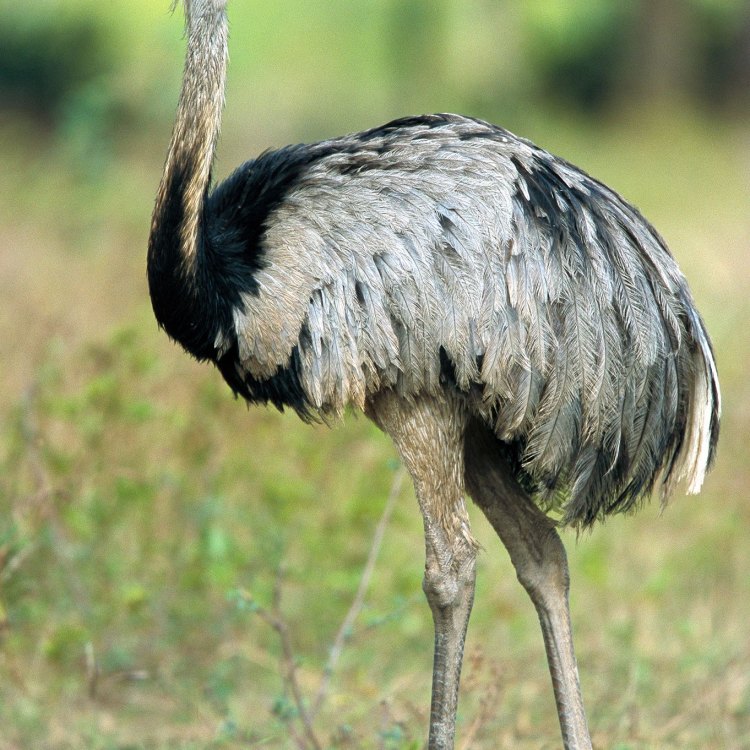
The Magnificent Greater Rhea: South America's Majestic Flightless Bird
Disclaimer: The content provided is for informational purposes only. We cannot guarantee the accuracy of the information on this page 100%. All information provided here may change without prior notice.

